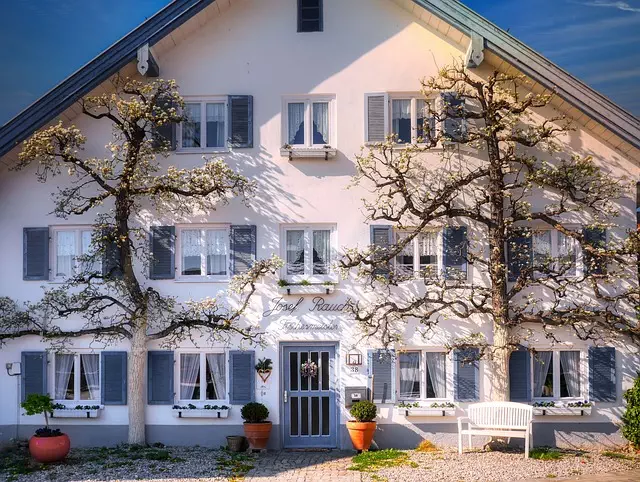The Kratom tree (Mitragyna speciosa) is a towering, evergreen specimen reaching up to 26 feet with dark green, elliptical leaves and a straight, branchless trunk. It boasts distinctive white/pink flowers and red fruits, reflecting its tropical rainforest origin. Its striking appearance and cultural significance are driven by mitragynine, the active compound found in its leaves, making extracts like Green Hulu Kratom Extract popular for their potential therapeutic benefits. Understanding what a kratom tree looks like reveals its impressive size, unique leaf structure, and rich environmental requirements.
“Unraveling the mysteries of the kratom tree (Mitragyna speciosa) is essential for understanding its remarkable extract, Green Hulu Kratom. This tree, native to Southeast Asia’s lush rainforests, boasts visually striking features with its dense foliage and distinctive leaf shapes. Beyond its aesthetics, the extraction process of Green Hulu Kratom focuses on capturing the plant’s potent benefits, including potential pain relief and stress mitigation. As the demand for kratom grows, exploring sustainable harvesting practices is crucial to preserving both the tree and its natural habitats.”
- The Kratom Tree: A Closer Look at Its Appearance
- – Description of the kratom tree (Mitragyna speciosa)
- – Key visual characteristics and growing environment
The Kratom Tree: A Closer Look at Its Appearance
The Kratom tree, scientifically known as Mitragyna speciosa, is a vibrant and distinctive plant that stands out in its natural habitat. This perennial tree typically reaches heights of 13 to 26 feet (4 to 8 meters) with a broad, dense canopy. Its leaves are compound and elliptical in shape, ranging from 4 to 7 inches (10 to 18 centimeters) in length. The upper surface of the leaf is dark green and rough to the touch, while the underside is lighter in color and slightly fuzzy.
The tree’s trunk is usually straight and robust, often growing without branches for a considerable height, which helps it reach maximum sunlight for photosynthesis. During the flowering season, small white or pink flowers emerge from the axils of the leaves, adding a delicate touch to its overall appearance. The fruits produced by the kratom tree are small, round, and red when ripe, further enhancing its visual appeal in its natural rainforest environment.
– Description of the kratom tree (Mitragyna speciosa)
The Kratom tree, Mitragyna speciosa, is a captivating and distinctive plant that thrives in tropical rainforests across Southeast Asia, particularly in regions like Thailand, Malaysia, and Indonesia. This evergreen tree can grow up to 25 meters tall, displaying a robust and sprawling canopy that provides shelter for a myriad of wildlife. Its leaves are compound and deeply lobed, ranging from dark green to almost black, giving the tree a lush and vibrant appearance. The distinctive feature of the kratom tree is its unique flower structure, which produces small white or pink blooms, adding a delicate touch to its overall aesthetics.
When observing what does a kratom tree look like, one cannot help but be impressed by its size and the intricate arrangement of its leaves. The tree’s bark is often rough and textured, adorned with various growth patterns. Its fruits are small, round, and green, containing seeds that hold significant cultural and medicinal value. The kratom tree has become a subject of interest due to its potent compound mitragynine, found in its leaves, which has led to its extraction into forms like Green Hulu Kratom Extract, sought after for its potential therapeutic benefits.
– Key visual characteristics and growing environment
The Kratom tree, scientifically known as Mitragyna speciosa, is a vibrant and striking plant that thrives in specific environmental conditions. Visually, it resembles a tall, slender shrub with delicate leaves that range from light green to dark emerald in color. The leaves grow in pairs along the stem, creating an elegant, feathery appearance. In its natural habitat, typically tropical rainforests, the tree can reach heights of up to 25 meters, showcasing its robust and resilient nature.
The growing environment plays a pivotal role in shaping the tree’s characteristics. It favors warm, humid climates with consistent rainfall, which contributes to its lush foliage. The soil must be well-draining yet rich in organic matter to support its robust growth. These environmental factors influence not just the physical appearance of the kratom tree but also the potency and composition of its extract, making the growing conditions a key aspect to consider for quality Green Hulu Kratom Extract.
The Kratom tree, scientifically known as Mitragyna speciosa, is an intriguing plant with distinct visual features. Its lush foliage and unique growth pattern make it easily recognizable. With its origins in Southeast Asia’s tropical rainforests, this tree thrives in warm, humid conditions, showcasing its resilience and adaptability. Understanding the kratom tree’s appearance is essential when exploring the world of green Hulu Kratom extract, as it provides valuable insights into the plant’s cultivation and the potential quality of its extracts.






